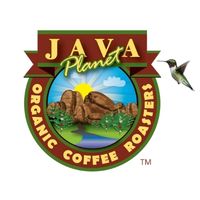Coffee Basics
Coffee – From Nature to Your Cup
There are two main types of coffee plants, although variations even among these, the Robusta and the Arabica. Robusta is used more often in blends and has a less refined taste, and higher caffeine content. The Arabica, more sought after, is the basis of specialty coffees.
Coffee plants can grow as high as 33 feet, but are usually pruned to heights that allow for easier harvesting. The Arabica species is self pollinating while the Robusta relies on cross pollination. The coffee tree flowers twice a year, and a quarter of the flowers turn into coffee cherries.
Coffee Processing
As the coffee cherries turn red, harvesting begins. On large plantations, strip picking by machinery is often used. However smaller farms handpick the cherries as they ripen, resulting in a better product.
Freshly picked, ripe coffee.
After it is picked the coffee seed has to be extracted from the cherry by the wet method, semi-washed or dry method. Each method lends its own flavor to the coffee.
The dry method involves laying the cherries out to be dried under the sun. The beans are turned every few hours to ensure even drying. This is done over several weeks. Once the fruit begins to dry and fall off, the rest of the job is done by mulching machinery. This system produces a green bean that is heavy in body, sweet and smooth. Java Planet coffees produced using this method are, Ethiopian Harrar and Uganda.
The wet processing method skips the sun bath, and goes straight to the mulching machine, pulp washed away, and then the bean sits in water for 24 to 48 hours to ferment. Any remaining pulp is washed off and the beans are either laid out to dry or put in a drying machine. This results in coffee that has a brighter, fruitier flavor. Java Planet coffees produced using this method are, Bolivia, Colombia, Guatemala, Ethiopian Yirgacheffe and Costa Rica.
A hybrid process is now being used in Indonesia and Brazil called “wet hulled”, “semi-washed” or “Giling Basah” in Indonesian. In this method the outer skin is removed using locally built pulping machines. Still coated with some of the inner fruit, it is stored for up to 24 hours. The remaining fruit is washed off and the beans are laid in the sun to partially dry, leaving 30% to 35% moisture. Java Planet coffees produced using this method are Sumatra, Sulawesi, and Papua New Guinea.
Roasting Coffee
Roasting turns the green coffee beans we import from small organic certified farms into the aromatic brown beans we ship to you. The degree of roasting varies, due to both the type of bean, and ones preference for the taste found in the brewed cup. Below are some of the names used to designate the degree of roast:
Light roast: half city, cinnamon, New England and light
Medium roast: American, medium/high, breakfast and regular
Full medium: light French, Viennese, city, full city
Dark/High Roast: New Orleans, European, French, after dinner, Italian
Very Dark Roast: Continental, dark French, heavy
Grinding and Brewing Coffee
To get the best taste from your specialty coffees it is best to grind them just before brewing. When grinding the coffee you do not want to have it be too coarse as it will produce watery coffee and the finer you grind it (powdery) the more bitterness due to the essential oil of the bean vaporizing. When brewing the coffee the ideal proportion is 2 tablespoons of ground coffee to 6 oz of water. You will want to use hot, but not boiling water. The heat from the boiling water just as in over grinding vaporizes the essential oil in the beans which give such wonderful flavor. The ideal temperature for your water is 195 to 205 degrees.
Ground coffee starts to loose its flavor after about an hour, and brewed coffee left on a burner loose its freshness after about 20 minutes. To keep brewed coffee longer, place it in an air pot vacuum server.
You can experiment with different methods of brewing your coffee. A variation on the traditional open pot style of brewing is the coffee press. Hot water is poured over the grounds and allowed to steep for four to six minutes and then a mesh filter is pushed down, separating the grounds from the liquid. This has the advantage of not using paper filters which can remove subtle flavors of the bean.
Not much is to be said about drip coffee makers as they are by far the most popular method of brewing coffee, however use of a metal mesh filter will improve the taste of the coffee.
The final result-an amazing cup of coffee!
Espresso brewing has gained much popularity, and is a method that uses pressure rather than gravity to have water pass through the grounds. This takes a specialty machine, of which types range for your counter top all the way to fantastical looking machines you will find in your finest coffee establishments.
There are several other methods such as Turkish or Arabic coffee, Italian stove top coffee makers, and vacuum brewers that can be experimented with.
We encourage you to experiment and find what you enjoy the most!
